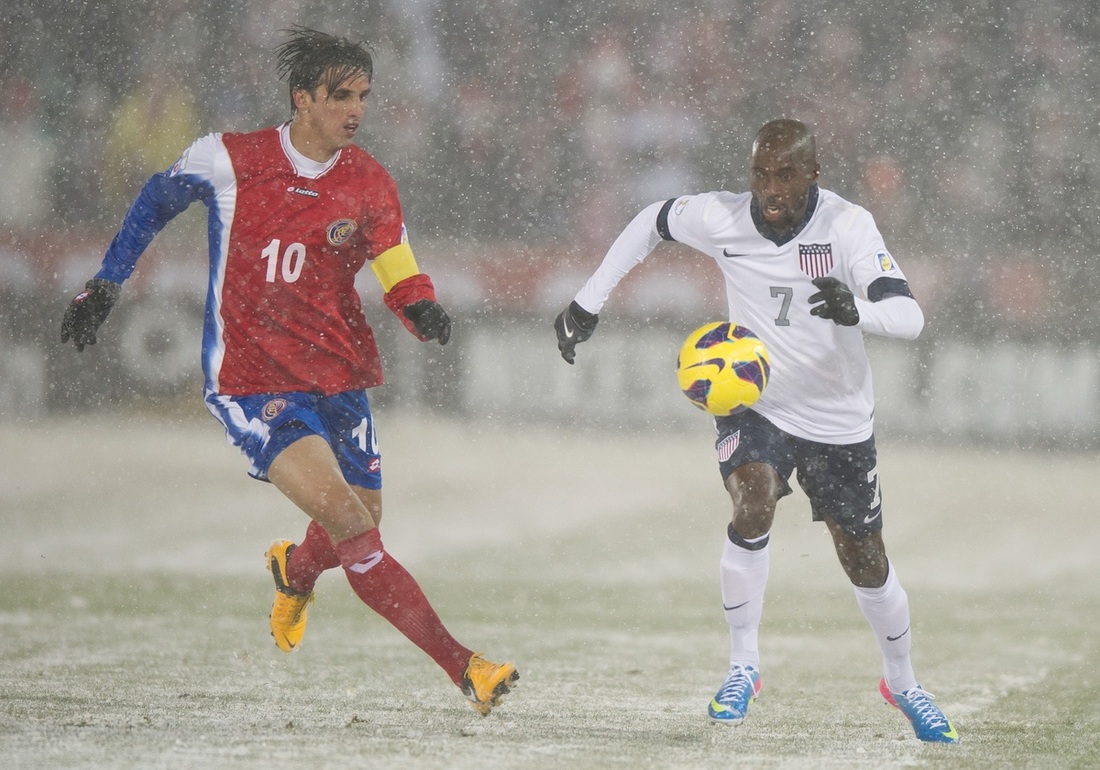|
Every four years, American soccer fans are getting better at agonizing over the World Cup. As I write in my new book, eight years ago in Germany I noticed the social media raging over the lineups of Bruce Arena. This was progress as a soccer nation.
Four years ago in South Africa I was aware of how fans exulted – electronically -- over the 91st-minute goal produced by the law firm of Howard, Donovan, Altidore, Dempsey and Donovan. Now the greatest angst is over the exclusion of Donovan – that is not going away easily -- but there is also the growing sophistication on the fan sites about the fine-tuning being performed by Jurgen Klinsmann in three domestic friendlies. On Sunday, fans had the Wall Street buzz of watching the players' stock go up and down, virtually by the touch. I was not immune as I watched Tim Chandler playing catchup at left back, getting a look in place of DaMarcus Beasley, who is a decade older. Chandler, who is right-footed, is more comfortable at right back but Klinsmann thinks he needs to upgrade at left back. At one point Chandler darted forward, followed the play, caught up with a nice pass toward the left corner and centered it admirably, as the USA scored on a flubbed poke by Clint Dempsey. That will raise Chandler’s stock, I thought. But Chandler faded back to insecurity. In the 90th minute he made a mistake that led to a penalty goal for Turkey in a 2-1 victory for the USA. Oops, a late-afternoon slide, as they say on the market channels. I’m still a Beasley supporter. He plays the whole field and gives everything. The USA will play one more friendly before heading to Brazil. The fans will be watching the market fluctuations. In other countries, there is gnashing of teeth over exclusions and inclusions. Giuseppe Rossi, from New Jersey, did not make the Italian squad for the second straight World Cup. The kid tossed and lost in choosing his Italian passport over his American passport. There is still time for injuries to ruin four years, as Mexican and Italian players discovered this weekend. To get into this growing American fascination with the rhythms of the World Cup, consult your favorite fan site, as well as: http://www.nytimes.com/2014/06/02/sports/soccer/player-ratings-us-2-turkey-1.html?ref=soccer&_r=0 http://www.goal.com/en-ca/news/4176/united-states/2014/06/02/4855058/ives-galarcep-altidore-shines-chandler-struggles-and-other http://www.socceramerica.com/article/58450/usa-adjusts-enough-to-hold-off-turks.html?edition=11905
John McDermott
6/2/2014 08:18:39 am
Jürgen tinkers on. The one player whose stock has dropped the most of late has to be Omar Gonzalez. It's looking more and more like the starting central defensive pair will be Besler and Cameron. And German-American John Brooks looks quite solid coming on as a sub against Turkey. Will Gonzalez get another look against Nigeria? I agree with you about Beasley. Chandler did not do enough to win the position, and in fact was too often caught out of position. The other player who should be worried is Altidore. I'm thinking he'll get a half against Nigeria and both Wondolowski and Johansson will also get time up front. I thought Altidore was awful against Azerbaijan and not good enough against Turkey. Whether his confidence is shot or he just isn't as good, especially when he actually has the ball, as JK thinks he is, it's beginning to look like he may not be the best option anymore up front with Dempsey. 6/3/2014 09:36:46 am
“At some point, you have to go with what you’ve got” is good advice that I received from a woodworking friend. We have a working arrangement where I can use his 18” jointer and wide sander in exchange for help when he needs finishing a job.
George Vecsey
6/3/2014 11:20:55 am
Guys, thanks. I agree that Klinsmann knows himself and the sport. These friendlies are to try stuff with the squad...but seeing Chandler and a bit of Green, I would say, they are not ready. Most good teams do not have many questions at this point. Having said all that, I maintain the US will be happy to be close to Ghana late in the first match -- and the absence of Donovan will be an issue. If it's 2-0 or worse, it won't matter. GV 6/4/2014 11:37:42 pm
George and John,
George Vecsey
6/5/2014 03:13:34 am
Alan, thanks. Friedel is a highly successful athlete, and like most great athletes, he is extremely positive. They have to believe in themselves and their team., Things can happen. He is citing real history. 3-2 over Portugal really happened. They crushed Mexico in the R16., Best US game I ever saw. 6/6/2014 11:17:07 am
George Comments are closed.
|
Categories
All
|











